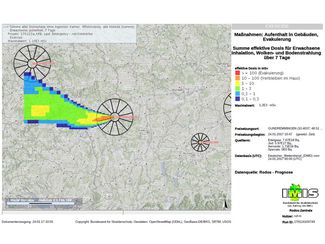-
Topics
subnavigation
Topics
Electromagnetic fields
- What are electromagnetic fields?
- Static and low-frequency fields
- Radiation protection relating to the expansion of the national grid
- High-frequency fields
- Radiation protection in mobile communication
Optical radiation
Ionising radiation
- What is ionising radiation?
- Radioactivity in the environment
- Applications in medicine
- Applications in daily life and in technology
- Effects
- What are the effects of radiation?
- Effects of selected radioactive materials
- Consequences of a radiation accident
- Cancer and leukaemia
- Genetic radiation effects
- Individual radiosensitivity
- Epidemiology of radiation-induced diseases
- Ionising radiation: positive effects?
- Risk estimation and assessment
- Radiation protection
- Nuclear accident management
- Service offers
-
The BfS
subnavigation
The BfS
- About us
- Science and research
- Laws and regulations
- BfS Topics in the Bundestag
- Links
In the event of an emergency
The reactor disasters in Chernobyl and Fukushima have demonstrated that serious nuclear accidents can happen. As it cannot be excluded that such incidents can happen again, a system of emergency preparedness for the protection of the population is necessary. In order to be able to take appropriate protective measures in the event of an emergency, the contamination (pollution) of the environment has to be forecast, measured and the resulting radiation exposure of the population has to be ascertained.







